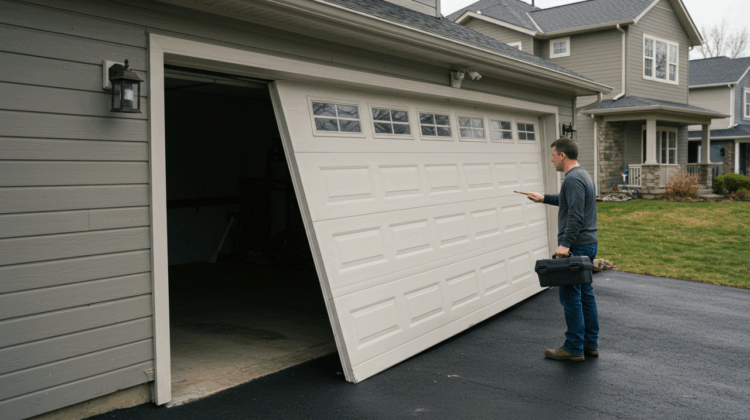
When your garage door suddenly refuses to open, makes strange noises, or gets stuck halfway, it can be more than inconvenient — it can be a safety risk. Garage doors are heavy, complex systems with dozens of moving parts. Over time, wear and tear can lead to breakdowns. By understanding the most common garage door repairs and learning how to prevent them, you can save money, extend the life of your system, and keep your home secure.
Why Garage Doors Break Down
Garage doors are used multiple times a day, often thousands of cycles per year. With so much use, it’s no surprise that parts eventually fail. Most problems are caused by a lack of maintenance, worn-out parts, or exposure to the elements. Taking a proactive approach is the key to avoiding costly emergency repairs. For seasonal guidance, see our article on seasonal garage door maintenance.
1. Broken Springs
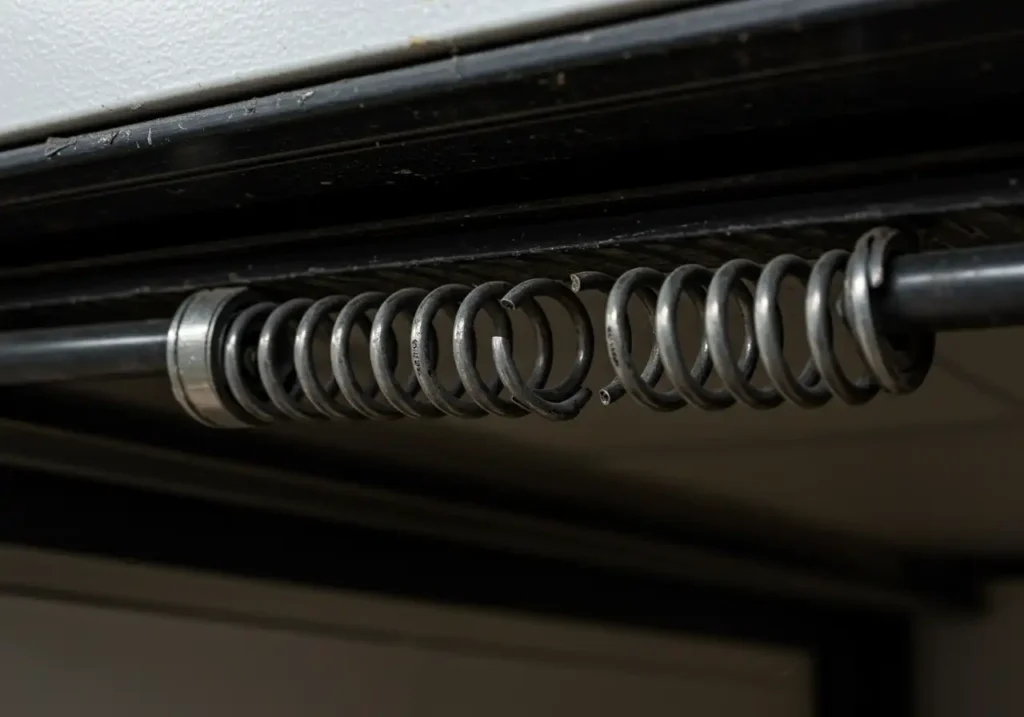
Symptoms: The door won’t open, feels extremely heavy, or makes a loud bang when the spring breaks.
Why it happens: Torsion and extension springs are under extreme tension and wear down after 7,000–10,000 cycles — about 7–10 years of regular use.
Warning signs: Visible gaps in the coils, squeaking, or the door dropping quickly when released.
Prevention: Have springs inspected annually and lubricated to reduce friction. Never attempt DIY spring replacement — it’s dangerous and should be handled by professionals.
2. Worn or Frayed Cables
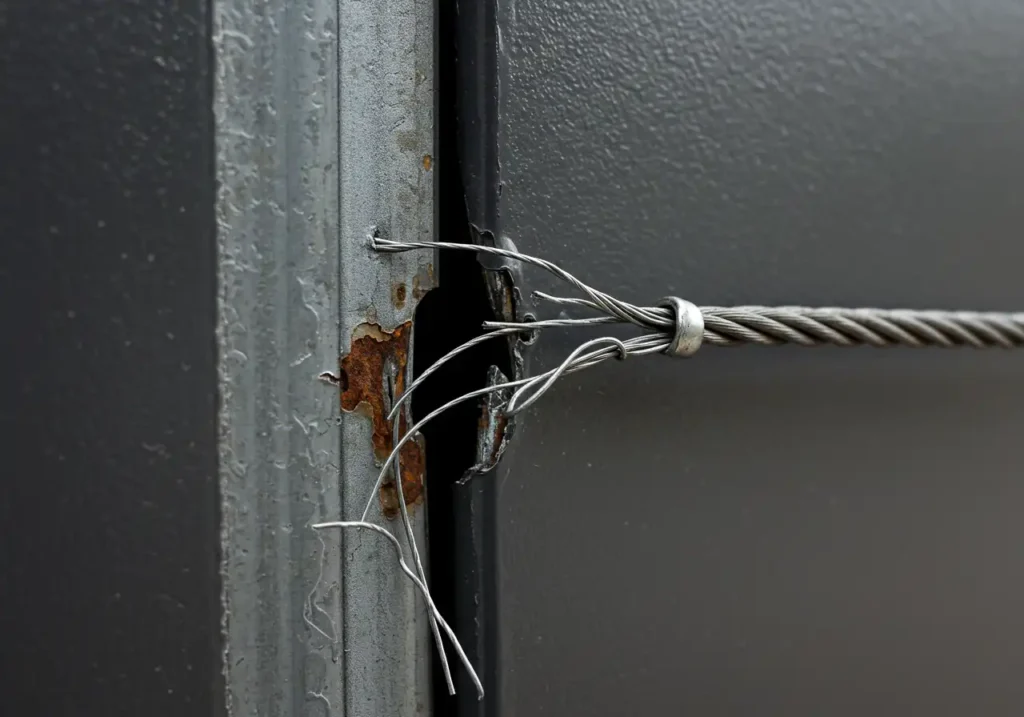
Symptoms: The door sags on one side, won’t lift evenly, or the cable visibly frays.
Why it happens: Cables work with springs to lift the heavy door. Over time, they weaken due to tension, rust, or lack of lubrication.
Prevention: Check cables during seasonal inspections. Replace at the first sign of fraying to prevent sudden failure. Cables typically last 8–10 years when properly maintained.
3. Malfunctioning Garage Door Opener
Symptoms: The opener hums but doesn’t lift, remotes stop working, or the door opens only halfway.
Why it happens: Worn gears, stripped chains, or electrical issues inside the motor unit can cause failure.
Prevention: Keep opener tracks lubricated, replace remote batteries regularly, and avoid overloading the opener. Smart openers can provide usage alerts before major issues develop. Learn more in our guide to smart garage doors.
4. Misaligned or Damaged Tracks
Symptoms: The door sticks, jerks, or won’t move smoothly along the rails.
Why it happens: Tracks can bend from impacts or loosen due to vibration over time.
Prevention: Inspect and tighten bolts and brackets annually. If the track is bent, call a professional to realign or replace it before the issue worsens. Misalignment is one of the top reasons doors come off their tracks entirely.
5. Sensor Problems
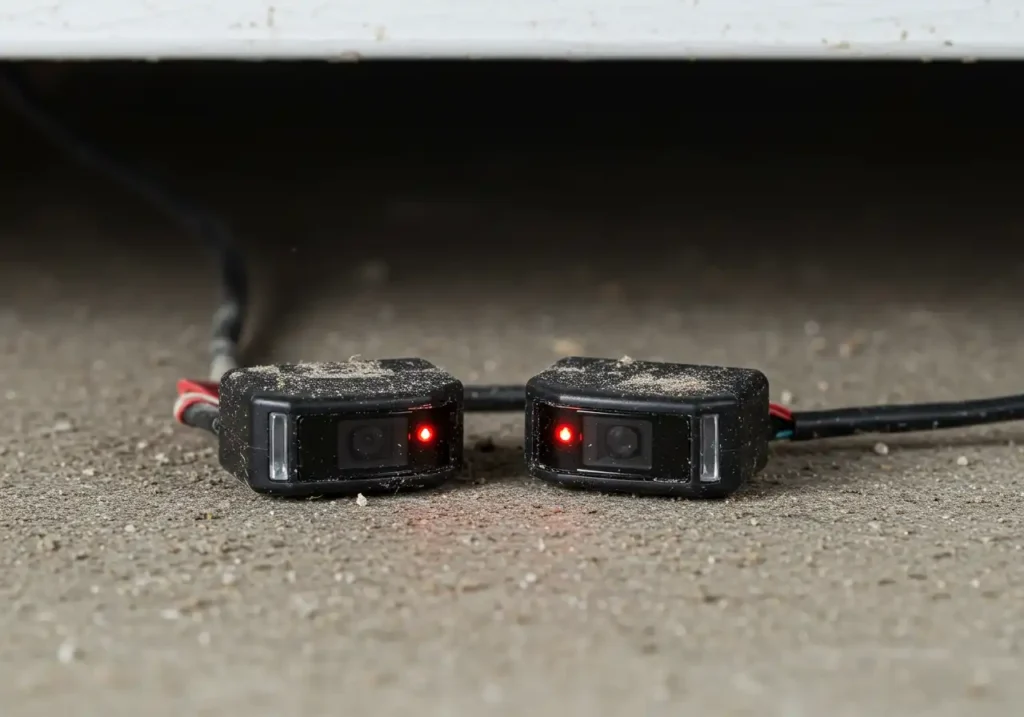
Symptoms: The door won’t close fully or reverses suddenly for no reason.
Why it happens: Safety sensors near the floor get misaligned, blocked, or dirty.
Prevention: Keep sensors clean and aligned. Test the safety reverse feature monthly. For full details, see our article on garage door inspections.
6. Noisy Operation
Symptoms: Grinding, squeaking, or banging sounds during operation.
Why it happens: Lack of lubrication, worn rollers, or loose hardware.
Prevention: Apply silicone-based lubricant twice a year and tighten bolts. Replace worn nylon rollers with quieter options for a smoother ride.
7. Worn Weatherstripping
Symptoms: Drafts, pests, or water leaking into the garage.
Why it happens: Seals wear down due to temperature fluctuations and sunlight exposure.
Prevention: Inspect weatherstripping every season. Replace at the first sign of cracking. Proper sealing also improves energy efficiency — see our guide on garage door weather sealing.
8. Door Off Its Tracks
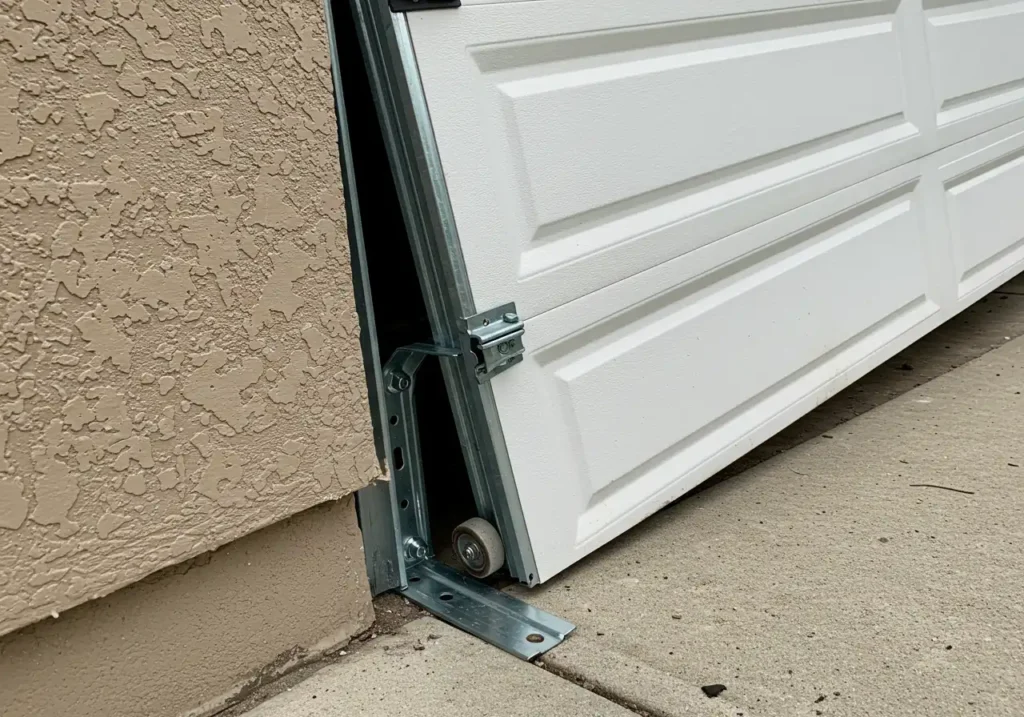
Symptoms: The door hangs crooked or gets stuck partway.
Why it happens: Forceful impacts or broken hardware can cause the door to jump off the track.
Prevention: Stop using the door immediately if it comes off its track. Forcing it can bend panels and tracks further. Always call a professional for safe realignment.
9. Electrical or Remote Control Issues
Symptoms: The wall switch works but the remote doesn’t, or vice versa.
Why it happens: Dead batteries, faulty wiring, or interference from nearby devices.
Prevention: Replace remote batteries annually and keep remotes away from heat or moisture. If issues persist, have an electrician check wiring connections inside the opener.
Repair Costs: What Homeowners Should Expect
One of the biggest concerns homeowners have about repairs is cost. While prices vary by location and model, here are typical ranges:
- Spring replacement: $150–$300 per spring
- Cable replacement: $125–$200
- Track repair/replacement: $150–$400
- Opener motor repair: $200–$350
- Sensor realignment: $75–$150
- Weatherstripping: $100–$200
Preventive maintenance, such as lubrication or inspections, costs a fraction of these repairs and helps avoid emergencies.
How Long Do Repairs Last?
Homeowners often wonder how long repairs will hold. The answer depends on the part:
- Springs: 7–10 years (with proper maintenance)
- Cables: 8–10 years
- Weatherstripping: 2–3 years
- Rollers: 5–7 years
- Opener motors: 10–15 years
Following a maintenance plan extends these lifespans and reduces repeat repairs.
DIY vs. Professional Garage Door Repairs
Some small repairs can be done safely at home, while others should always be handled by professionals:
- Safe DIY tasks: Tightening bolts, replacing weatherstripping, cleaning sensors, lubricating rollers.
- Professional only: Spring replacement, cable repairs, major track alignment, opener motor replacements.
According to the U.S. Consumer Product Safety Commission, springs and cables are among the most dangerous components for DIYers. Attempting these repairs without training can result in severe injury.
How Preventative Maintenance Reduces Repairs
Most repairs can be avoided with consistent care. Following a routine of inspections, lubrication, and seasonal checks keeps your system in top shape. Regular care also saves money — fixing a frayed cable early costs far less than replacing a damaged motor caused by imbalance.
We recommend combining monthly DIY checks with annual professional service. This proactive approach ensures you catch small issues before they turn into expensive emergencies.
Expanded Homeowner’s Quick Checklist
Use this checklist monthly and seasonally to prevent common repairs:
- Listen for unusual noises during operation.
- Test the balance by lifting the door manually halfway.
- Clean and lubricate rollers, hinges, and springs twice a year.
- Check weatherstripping for cracks every season.
- Inspect sensors and test the auto-reverse feature monthly.
- Examine cables for fraying during seasonal checks.
- Replace opener remote batteries annually.
Final Thoughts
Garage door breakdowns are never convenient, but most can be prevented with proactive care. By knowing the most common garage door repairs — from broken springs to faulty sensors — you’ll recognize warning signs early. Combining at-home maintenance with professional inspections helps ensure your garage door remains safe, efficient, and reliable for years to come.
